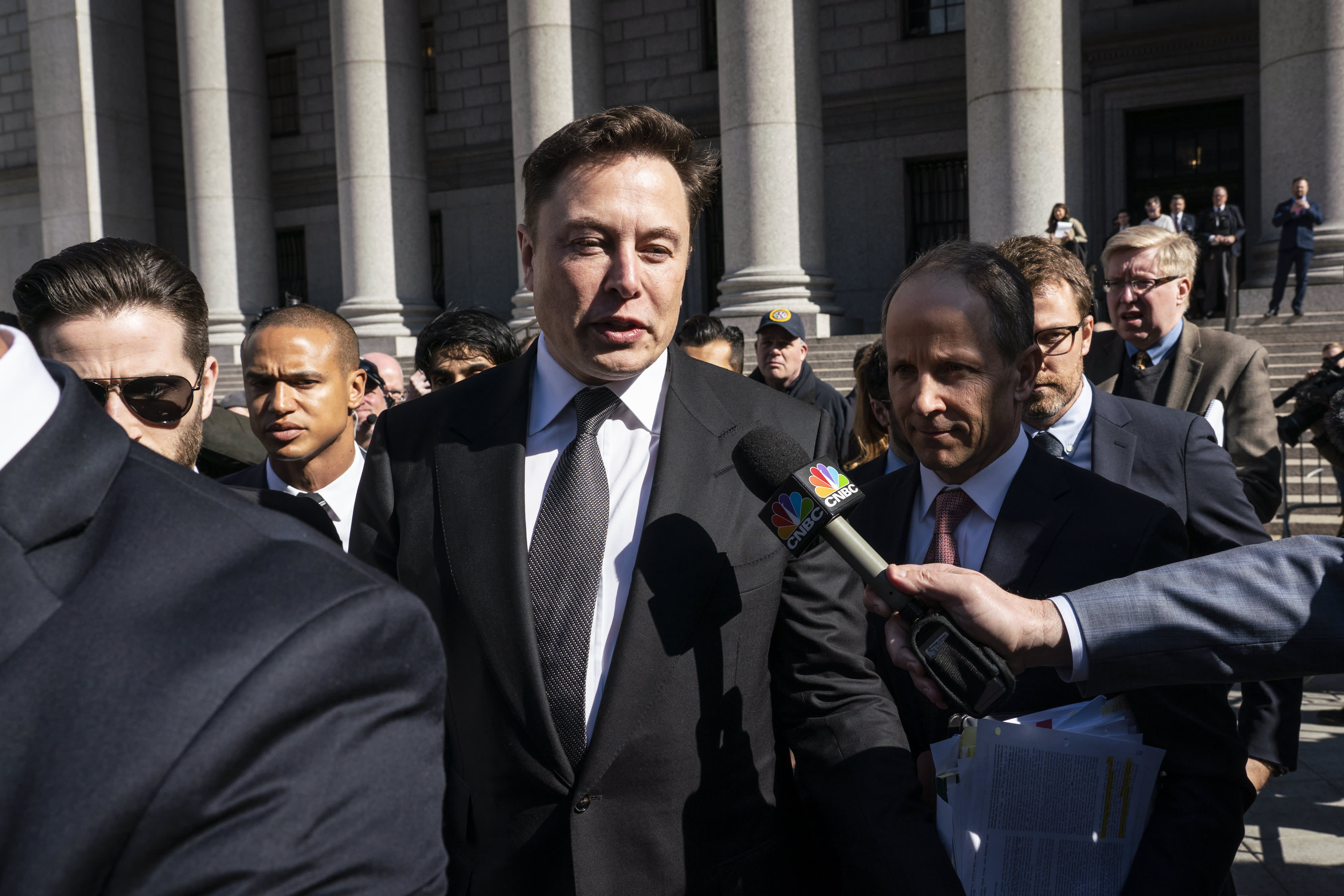The high tech behind Netflix’s old-school DVD service
Illustration by Cath Virginia / The VergeOver the last 25 years, Netflix shipped more than 5 billion DVDs to millions of subscribers. The disc-by-mail service, which is shutting down this Friday, owed its success to lots of behind-the-scenes innovation....
/cdn.vox-cdn.com/uploads/chorus_asset/file/24941171/236760_The_untold_story_of_the_tech_behind_Netflix_s_DVD_business_FINAL_CVirginia.jpg)
There was a point in the late 2000s when it seemed like every mailbox was stuffed with red envelopes. Netflix shipped a billion DVDs by mail between 2007 and 2009 alone, with its loyal fans overwhelming the US Postal Service by returning 1.6 million discs every single day. Almost every film ever made, available via next-day delivery, with no late fees: that formula didn’t just drive Blockbuster into bankruptcy but, for a moment in time, completely redefined how movies were watched.
This week, after 25 years of operation, Netflix is sending out a final batch of its iconic red envelopes to its remaining DVD subscribers. On Friday, Netflix’s DVD.com subsidiary will close its doors for good. The end of DVD-by-mail has been a long time coming, to the point where Netflix’s April announcement of an impending closure almost felt like a throwback to bygone, pre-streaming times.
But as old-school as Netflix’s DVD business might sound, the service has been anything but low-tech. In order to send out more than 5 billion discs to millions of subscribers over the years, the company deployed cutting-edge automation, embraced machine learning before it was cool, and laid the technical and financial foundation for what would ultimately become the massive, worldwide streaming business Netflix is known for today.
“Everybody’s like, ‘DVD — that’s an ancient technology,’” said Justin Gallion, who worked in the company’s Little Rock, Arkansas shipping hub for more than five years. “But really, honestly, DVD doesn’t get enough credit.”
Manual labor was a big part of Netflix’s early days. Employees hand-stuffed 137 envelopes on launch day in April of 1998, and they continued to fulfill every order by hand even after the company began opening fulfillment hubs across the country in 2002. But once Netflix grew to millions of subscribers, it quickly became clear that this model wasn’t tenable.
“(Netflix) was growing really, really fast,” recalled former Netflix DVD director of engineering Paul Johnson. “They had to find a way to automate things because they weren’t going to be able to keep up with the growth.”
At first, Netflix introduced machines to stuff its iconic red envelopes, to the tune of 4,500 discs per hour, and sort them by zip code for shipping. Then, it also automated the processing of returned DVDs. Netflix commissioned Bronway, an Ireland-based company that had been building machines to pack and ship CDs and DVDs for clients like Microsoft and Nintendo, to make a machine for its incoming mail.
Video: Bronway
Bronway custom-designed a massive disc robot called the “automated rental return machine,” or ARRM 3660. The ARRM, as Netflix employees simply called it, was an assembly-line-sized machine consisting of 6,500 parts total. At its center were two carousels, housed behind glass doors, that were loaded up with incoming mail and then used pneumatic arms to perform all of the things people had done before: slice open returned envelopes, unpack discs, inspect them, clean them, add them to a facility’s inventory system, and get them ready to go out of the door again — basically, every job short of sorting discs and stuffing envelopes for the next customer.
The robotics company sold 180 of these machines to Netflix in 2010, and they were deployed in stages across all of its hubs. The labor savings alone were enormous. “The hubs were a spectacular number of people,” recalled Johnson. “You could replace about five humans opening the discs with one machine.”
Once a hub was fully automated, it really only required a handful of people to operate. Warehouse workers would arrive at 2AM each day to flip on the machines and process tens of thousands of DVDs in time to deliver them to the Postal Service later that morning. “It was just one person per machine,” Gallion said. “You’d have one person running the stuffer, one person running the sorter, one person running the rental return machine.”
But automation wasn’t just about labor costs alone. Machines were also a lot better at their job, which led to less frustration for Netflix subscribers. Customers who borrowed entire seasons of a TV show would frequently mix up discs — they might put season 7 disc one of The Simpsons in the sleeve for season 7 disc two.
Netflix hub employees were supposed to catch those mix-ups and make sure that the next customer didn’t accidentally receive the wrong disc. “But humans aren’t very good at that,” Johnson said. Machines, on the other hand, aren’t fooled by similar-looking titles. “If barcode A doesn’t match barcode B, then clearly, you’ve got a mismatch,” he said.
Netflix’s automated rental return machine did more than keep an eye on the discs’ barcodes: part of the machine was a high-precision scanner designed to detect any physical imperfections. The technology was developed by Dr. Schenk, a German company specializing in quality control for CD and DVD manufacturers, and Netflix had commissioned the company to customize its technology so that it would work even with used discs. “Even if the DVD was scratched, it still could determine whether that DVD was playable or not playable,” said Gallion.
At least that was the idea. When the rental return machines arrived in Netflix’s shipping hubs, it quickly became apparent that the scanner wasn’t working as promised. “Its accuracy wasn’t that great,” recalled Gallion. The scanner was supposed to identify unplayable discs to toss while keeping playable discs with minor imperfections in rotation. The latter was especially important for Netflix’s bottom line: tossing a disc was costly for the company, to the tune of roughly $10 per wrongfully discarded DVD. “Putting a disc that would play in the trash was hugely wasteful,” said Johnson.
Video: Bronway
However, it turned out that the scanner’s algorithm was a bit too focused on saving Netflix money. Tuned to avoid the disposal of still-playable discs, it kept too many discs in rotation that ultimately wouldn’t work in a customer’s DVD player. Market research told Netflix that this was a big problem. “If someone got a bad disc three times, they would cancel their subscription,” said Ramasubbu Venkatesh, who was working as the company’s senior algorithms developer at the time. To make matters worse, the problem seemed to specifically impact hardcore movie fans. People who just borrowed the latest releases likely got fairly new discs, but anyone diving deep into Netflix’s catalog got older DVDs with a lot more scratches.
One day in 2011, Johnson and Venkatesh were having a beer together, and Venkatesh proposed a novel solution: what if they used machine learning to improve the performance of the scanner? Johnson thought it was worth a try. A small team put some of the scanners into a lab and worked on a better, data-driven algorithm. “That was pretty groundbreaking,” said Johnson. “It was before machine learning became trendy.”
Venkatesh had worked on machine learning in biotech before, but to do it for 180 machines that would scan millions of discs a day — that was something very different. “It’s one thing to read about a machine learning algorithm in a textbook,” he said. “But actually, to do it at the scale of Netflix — and do it right — is very difficult.”
When the machine learning approach rolled out a few months later, it quickly became clear that it was a huge success. “In terms of non-playable discs shipped to customers, it improved that by 22 percent,” Johnson said. “The customer complaints for unplayable DVDs were almost down to zero,” added Gallion. At the same time, the number of discs that were thrown away despite still being playable also decreased. “That thing was very accurate,” Gallion said.
Netflix began to offer streaming as an added benefit to its DVD subscribers in 2007, and a lot of things the company had built for its DVD website came in handy to get streaming off the ground. The queue subscribers used to preorder DVDs essentially became the precursor to today’s watchlist, and the recommendation engine Netflix had built to suggest new movies and shows to subscribers was adapted for streaming as well. “There was plenty of technology shared,” recalled Johnson.
Even some of the logistics Netflix had first developed for same-day shipping look eerily similar to the way it now handles streaming. When Netflix moved from one central shipping location to a network of hubs in 2002, it did so with the frugality of a startup that had just barely survived the dotcom crash. Instead of replicating its entire DVD library across every hub, local shipping facilities concentrated on a small number of sought-after movies of the moment, which were shipped out again as soon as customers returned them.
“We didn’t have DVDs sitting on shelves — even overnight,” wrote founding CEO Marc Randolph in his book That Will Never Work chronicling Netflix’s early days. Randolph called this “one of the greatest innovations in the history of shipping,” adding: “It was efficient, fast and cheap.” It also happens to be almost the same approach Netflix used when it launched its own streaming CDN in 2012. Instead of caching every title of its catalog, most Netflix CDN servers simply host the files that are predicted to see the highest demand.
In addition to contributing technology to streaming, Netflix’s DVD business also paid for its bills. Between 2012 and 2019, when Netflix stopped breaking out revenue for the segment, DVDs generated more than $2.6 billion in profits. Streaming, on the other hand, was hugely capital-intensive, especially for a company aiming to be a global player. Netflix’s international streaming segment wasn’t profitable until 2018. “We were the cash cow that was propping up streaming,” Johnson said. Automation and other technology-driven optimizations played a huge part in that. “Every dollar we could save was a dollar that would go to pay (for) House of Cards,” he said.
“If it wasn’t for us being as innovative as we were on the DVD side, Netflix streaming may not exist,” agreed Gallion.
Netflix’s DVD business peaked in September of 2011 when the company announced that it would split DVDs and streaming into two standalone companies — Netflix and Qwikster — with two separate subscription plans. Netflix customers were having none of it. “It was awful,” Johnson recalled. “We lost hundreds of thousands of subscribers that day.”
Netflix backpedaled on the Qwikster name change but kept the subscription plans separate, and customers who weren’t willing to effectively pay twice as much as before kept canceling. At the end of 2011, Netflix still had a little over 11 million DVD subscribers, as well as 21.5 million streaming subscribers. A year later, subscriptions had declined to 8 million, while streaming had grown to 30 million subscribers. Netflix stopped breaking out the number of DVD subscribers in 2019 when the number had declined to 2.15 million. The company ended that year with 167 million streaming subscribers.
“When I got hired (in 2013), they told me that this is not going to last,” Gallion said, recalling what one of the people told him in the job interview: “We don’t know exactly when that’s going to be. It may be in the next three years. It may be in five years. But there is going to come an end.”
“The writing was always on the wall,” Johnson said.
Video: Bronway
That Netflix kept the lights in its DVD hubs on as long as it did is largely due to the innovations that people like Johnson and Venkatesh worked on, which helped to automate shipping and keep the service profitable. But eventually, even Netflix’s high-tech disc robots were starting to show their age. Since they were all custom-built, servicing them wasn’t easy. Making matters worse was that Bronway, the company that had made Netflix’s automatic rental return machines, began winding down its business soon after they were purchased.
At first, Netflix responded to this by custom-building its own bits and pieces at its central operations facility in Ohio. “If some of the pneumatics needed to be fixed, they would actually rebuild a lot of the parts,” said Gallion. The decline of the DVD business made some of this maintenance a bit easier: faced with fewer subscribers, the company combined shipping facilities and closed redundant hubs, leaving it with a bunch of unused machines that could be used for spare parts. “We were basically salvaging parts of other equipment,” Gallion recalled.
At its peak, Netflix was operating more than 50 hubs across the country. Netflix spokesperson Adrian Zamora declined to comment on how many hubs remained operational in 2023, but Redditors estimated earlier this year that the number may have been in the single digits.
These last few hubs have been sending Netflix’s remaining DVD subscribers up to 10 extra discs during its final weeks of service, with no obligations to send any of them back. Netflix plans to donate a portion of its inventory to organizations focused on film and media, according to Zamora; the rest will be recycled.
As for shutting down its remaining hubs, Netflix does have a lot of practice with this by now. Gallion went through the process himself when the company decided to pull out of Little Rock in 2017, eliminating his job in the process. “It was pretty quick. It took us a week,” he recalled. “We cleared that building out and didn’t look back.”

 ShanonG
ShanonG 































